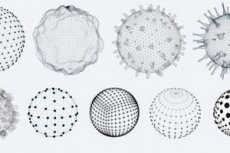Nye publikasjoner
Hvem blir oftest smittet: mennesker fra dyr eller dyr fra mennesker?
Sist anmeldt: 02.07.2025

Alt iLive-innhold blir gjennomgått med medisin eller faktisk kontrollert for å sikre så mye faktuell nøyaktighet som mulig.
Vi har strenge retningslinjer for innkjøp og kun kobling til anerkjente medieområder, akademiske forskningsinstitusjoner og, når det er mulig, medisinsk peer-evaluerte studier. Merk at tallene i parenteser ([1], [2], etc.) er klikkbare koblinger til disse studiene.
Hvis du føler at noe av innholdet vårt er unøyaktig, utdatert eller ellers tvilsomt, velg det og trykk Ctrl + Enter.

Om sirkulasjonen av virus mellom dyr og mennesker. Mange infeksjoner har blitt overført til mennesker fra dyr. Som et eksempel kan vi ta den samme koronavirusinfeksjonen SARS-CoV2 – den som forårsaker den velkjente COVID-19, eller det dødelige ebolafeberviruset. I naturen lever disse virusene i kroppene til flaggermus. Patogenet kan overføres fra dyr til mennesker, og tilbake, eller tilpasse seg en ny organisme og «bosette seg» i den.
Hvis vi snakker om virus som raskt formerer seg og transformerer seg, kan endringen av deres "bosted" bestemmes av den arvelige informasjonen i RNA eller DNA. Denne metoden er egnet hvis det finnes et grundig gjennomlest virusgenom og data om virusets tidligere plassering, informasjon om "relative" stammer, variasjoner osv. Alt dette er nødvendig for å bestemme graden av endring i infeksjonen.
Men hvis patogenet kan overføres fra flaggermus eller andre dyr til mennesker, skjer den samme prosessen i motsatt retning? Mange husker hvordan det samme koronaviruset med jevne mellomrom ble oppdaget hos kjæledyr hvis eiere var syke med COVID-19. Forskere forklarer: viruset, i ferd med å gå over fra en organisme til en annen, gjennomgår ikke alltid genetiske endringer - i hvert fall ikke i starten. Og det spiller ingen rolle om patogenet har noen mutasjoner. Hovedpoenget er dets evne til å etablere seg og tilpasse seg nye strukturer.
Nylig analyserte forskere hvor ofte virus overføres fra mennesker til dyr og omvendt. Millioner av virussekvenser som har samlet seg i ulike informasjonsdatabaser ble studert. Som et resultat viste det seg at dyr oftere blir smittet fra mennesker enn mennesker fra dyr (forholdet var 64:36). Blant virusinfeksjoner ble koronavirus og influensa A-patogenet overført oftest. Men selv om disse infeksjonene fjernes fra listen, tipper vektskålen fortsatt i favør av dyreinfeksjoner fra mennesker.
Som eksperter forklarer, aktiverer sirkulasjonen av virus mellom dyr og mennesker patogenets evolusjonære endringer. Samtidig er infeksjonen, som er i stand til å overleve med like muligheter i en eller annen organisme, lite utsatt for endringer. Tilsynelatende har den allerede en god grad av tilpasning, dannet tidligere.
Det er viktig å forstå at gjensidig smitteoverføring kan føre til latent smittebæring og andre problemer. Det er vanskelig å overvåke slike prosesser, men det er nødvendig. Derfor er samarbeid mellom spesialister med ulike profiler så viktig, inkludert biologer, zoologer, virologer på infeksjonssykdommer, veterinærer og økologer.
Den fullstendige versjonen av artikkelen er tilgjengelig på siden til tidsskriftet Nature Ecology & Evolution
